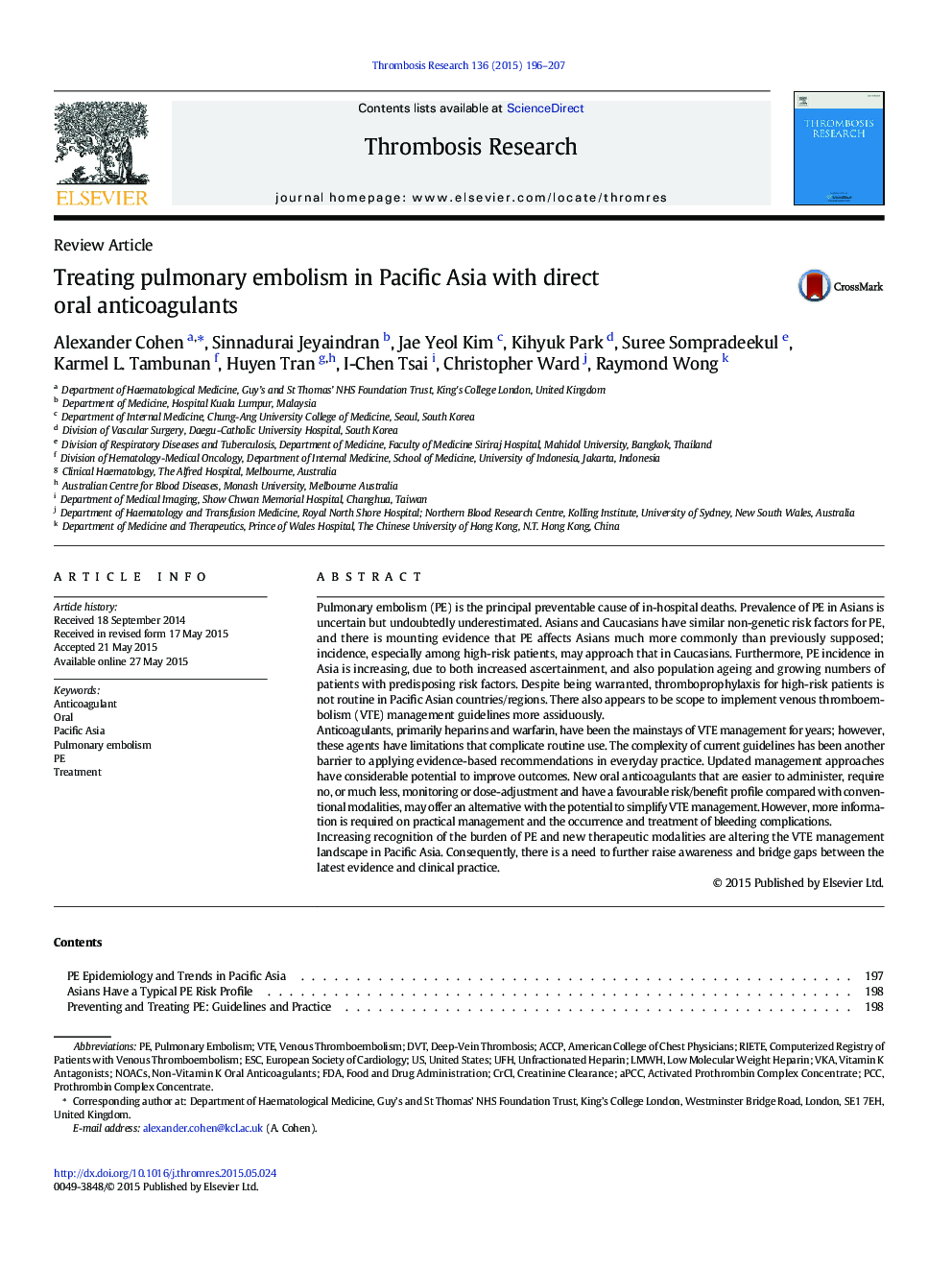| کد مقاله | کد نشریه | سال انتشار | مقاله انگلیسی | نسخه تمام متن |
|---|---|---|---|---|
| 6001279 | 1182948 | 2015 | 12 صفحه PDF | دانلود رایگان |
- Pulmonary embolism (PE) rates in Asians have been underestimated and are rising.
- Many Asians at high risk of PE do not receive evidence-based standard of care.
- Warfarin is awkward to manage and amplifies intracranial bleeding risk in Asians.
- New oral agents match warfarin in antithrombotic efficacy, but cause less bleeding.
- New oral anticoagulants offer a good alternative to warfarin, especially in Asians.
Pulmonary embolism (PE) is the principal preventable cause of in-hospital deaths. Prevalence of PE in Asians is uncertain but undoubtedly underestimated. Asians and Caucasians have similar non-genetic risk factors for PE, and there is mounting evidence that PE affects Asians much more commonly than previously supposed; incidence, especially among high-risk patients, may approach that in Caucasians. Furthermore, PE incidence in Asia is increasing, due to both increased ascertainment, and also population ageing and growing numbers of patients with predisposing risk factors. Despite being warranted, thromboprophylaxis for high-risk patients is not routine in Pacific Asian countries/regions. There also appears to be scope to implement venous thromboembolism (VTE) management guidelines more assiduously.Anticoagulants, primarily heparins and warfarin, have been the mainstays of VTE management for years; however, these agents have limitations that complicate routine use. The complexity of current guidelines has been another barrier to applying evidence-based recommendations in everyday practice. Updated management approaches have considerable potential to improve outcomes. New oral anticoagulants that are easier to administer, require no, or much less, monitoring or dose-adjustment and have a favourable risk/benefit profile compared with conventional modalities, may offer an alternative with the potential to simplify VTE management. However, more information is required on practical management and the occurrence and treatment of bleeding complications.Increasing recognition of the burden of PE and new therapeutic modalities are altering the VTE management landscape in Pacific Asia. Consequently, there is a need to further raise awareness and bridge gaps between the latest evidence and clinical practice.
Journal: Thrombosis Research - Volume 136, Issue 2, August 2015, Pages 196-207
